Summer file country is full of dark horses! Falling Dust needs more "tap water"
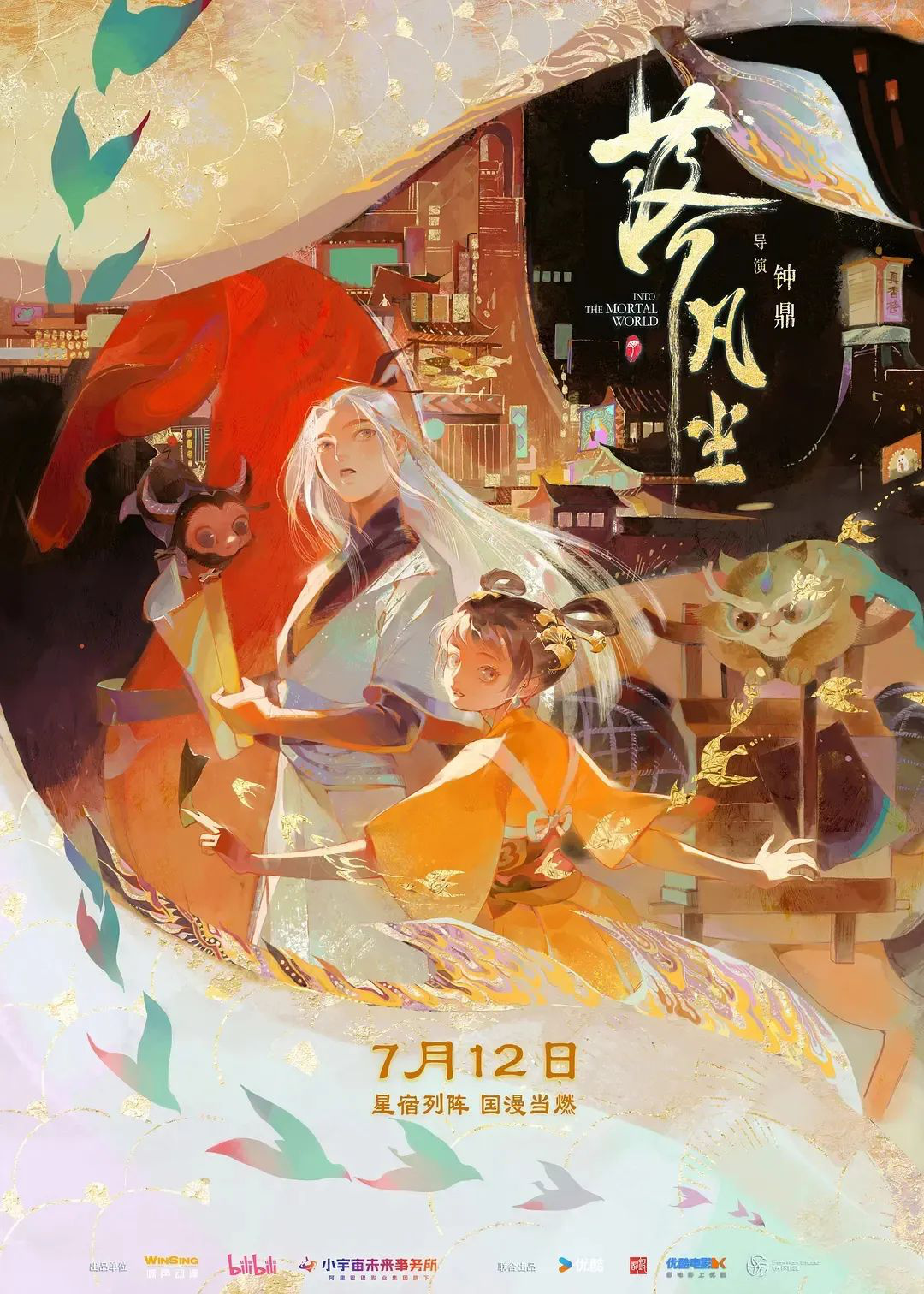
Special feature of 1905 film network Bilibili scored 9.6, Taobao Film scored 9.5, and the animated film scored 7.7 with Douban, which won the highest score of domestic films in the current summer file and became a surprise dark horse of word of mouth!
Six years ago, Zhong Ding, an associate professor of Guangzhou Academy of Fine Arts, led a team of graduates to create an animated short film "Falling into the Dust". After a year of production, it appeared online in bilibili and quickly became an explosion with tens of millions of broadcasts. Netizens also called for a movie version on the barrage.
The 7-minute short film presents the mythical elements of the 28 stars, an oriental aesthetic world composed of weaving, a brotherly relationship between a fairy who is responsible for "releasing the stars" and a naughty sister, with original story themes, innovative animation aesthetic exploration and interesting emotional interaction.
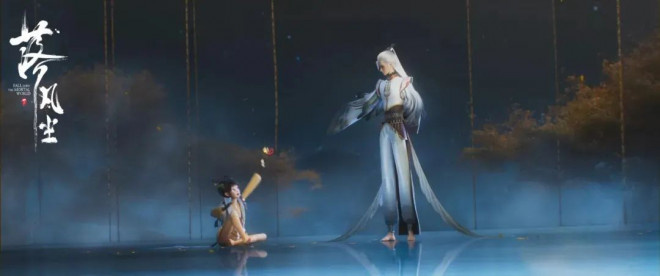
The success of the short film contributed to the evolution of Falling Dust into a cinema feature film, which lasted for five years. More than 50 production teams and 2,000 animation artists jointly created this new Chinese-style blockbuster.
A feature film can be regarded as a prequel to a short film, starting with the composition of the world outlook and the origin of brother and sister’s life experience. This is also the first time that domestic animated films have put the legend of the Cowherd and the Weaver Girl and the myth of the stars on the big screen.
"The short film is a test of water to see if the audience will be interested in such creativity and character relationship. The feedback is quite good, so we will use these elements in the film." In the "Dialogue" column of the 1905 film network, director Zhong Ding shared the creation process of "Falling Dust" from short film to long film.
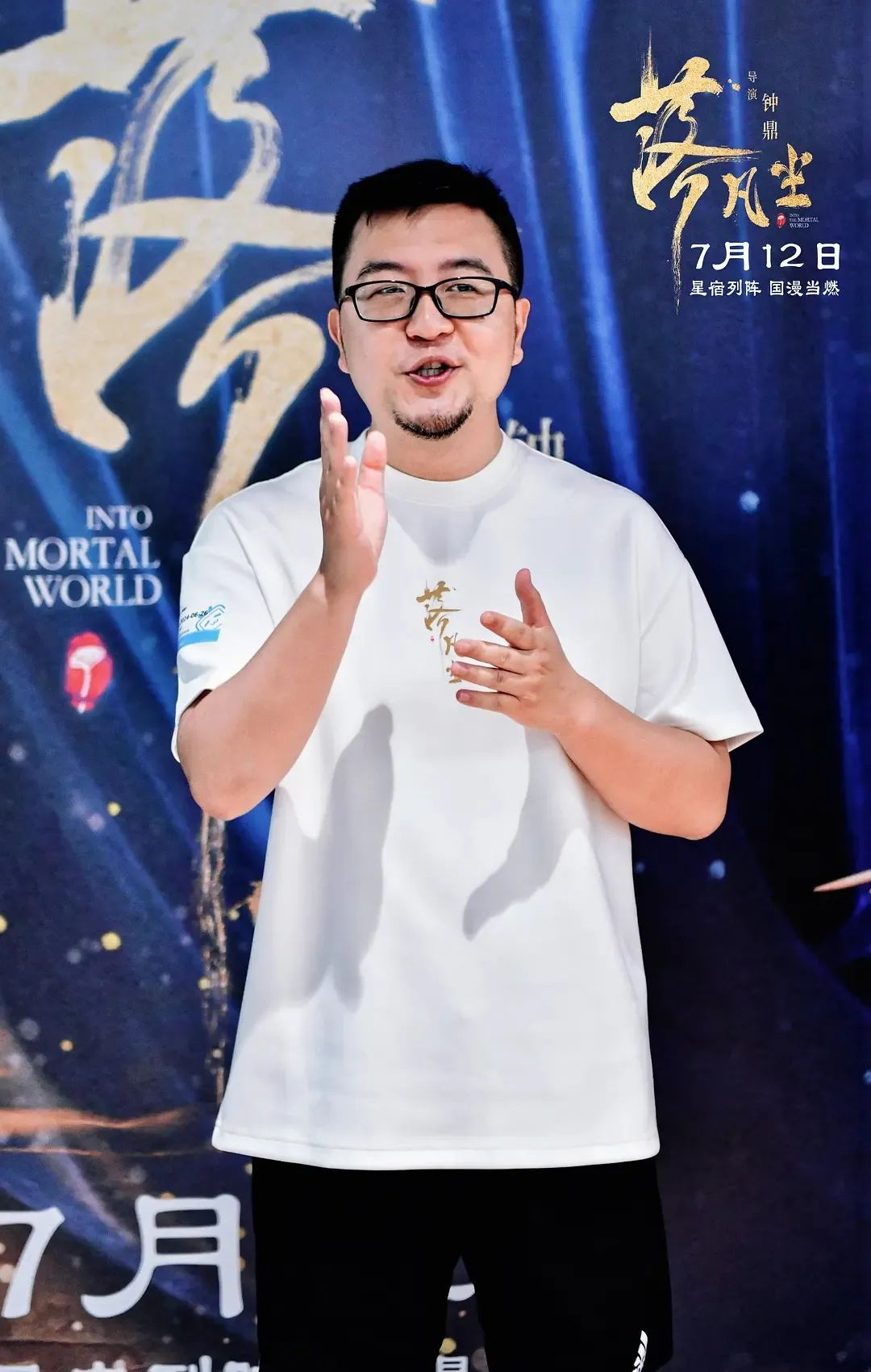
"The movie may not be perfect, but we are telling stories seriously. There are many new ideas that will make the audience shine and have sincere feelings. If the audience goes to see it, they will be able to find a resonance point."
Although Fallen Dust has a good reputation, Zhong Ding admits that Guoman’s original IP is difficult, and the audience’s attention and understanding are not high. The film’s current arrangement and popularity in the market are not as good as expected, and it is in urgent need of more people’s support and the spread of "tap water".

Excavate "Twenty-eight Stars"
The stars are one of the important components of China traditional culture, and belong to the constellation culture of Chinese.
Zhong Ding said that the 2012 animated film "The Adventures of Grandpa with Big Ears" was the first time that an animation in China took the stars as the theme, but there was never an animated film with the stars as the story, which was worthy of further exploration, and Fallen Dust took the first step.
The starry sky is divided into seven nights according to the four directions of southeast, northwest and northwest, which are the "four elephants": Qinglong, Suzaku, White Tiger and Xuanwu. The stars in each night are connected by imaginary lines, which constitute various shapes of graphics. The creative team extracted these important concepts and designed them into various forms of starry beasts.
For example, Niu Jinniu belongs to the Xuanwu system. There is a star pattern of Niu Su in the shape of the calf’s beast, and a turtle shell reflecting Xuanwu elements is added to the back. The winged salamander belongs to the Suzaku family, so it is a red snake with wings like Suzaku.
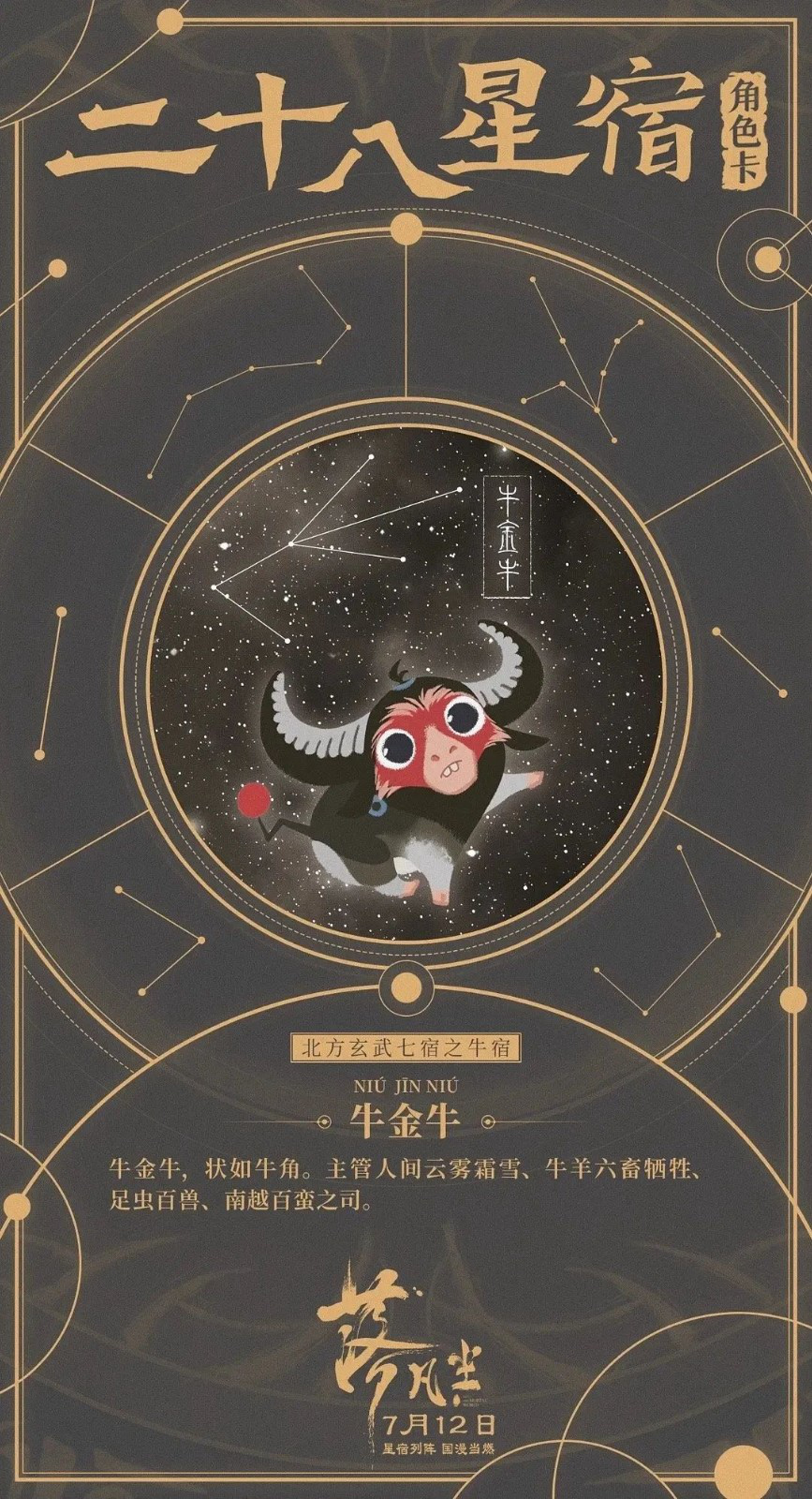
Based on this logic, the image of each star beast has been recreated in color and attribute. However, the movie did not spread out the 28 beasts corresponding to the stars one by one, nor did it fully introduce these details through the storyline.
"The first is too complicated, and the second is that this is not the point. The stars are still a clue in the movie, because the space is limited, so we mainly focus on the emotions of the main characters. "Zhong Ding said that if it can be successfully developed into IP, more stars and beasts will be displayed in the future. At present, the film has initially achieved visual science popularization.
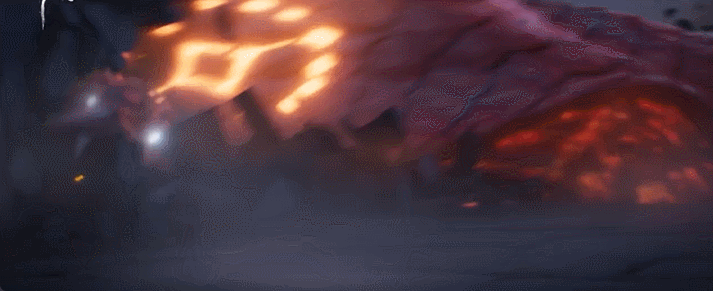
The story of fairy brothers and sisters joining hands to soothe the stars will inevitably remind people of "Bao Ke Meng" and so on, all of which have similar collection settings. Zhong Ding’s response is really influenced by these works. "We also think that this is a proven business model, which can be used to promote the role, and there is room for drama and derivatives in the future."
Rewrite the legend of cowherd and weaver girl
Falling into the Dust rewrites and deconstructs this legend that has been circulating for thousands of years through the story of the descendants of Cowherd and Weaver Girl. Zhong Ding believes that the traditional stories have the limitations of the times, and the films reshape the images of the Cowherd and the Weaver Maid with ideas that are more in line with modern people.
The Weaver Girl in the movie is a role of guarding the family and the balance between the two worlds at the same time. "She is not a simple love brain, but a woman with responsibility and responsibility, and has the right to choose herself and strong ability." Cowherd saved the Weaver Girl in an accident, and he is a simple, caring person who protects his family at the expense of himself.
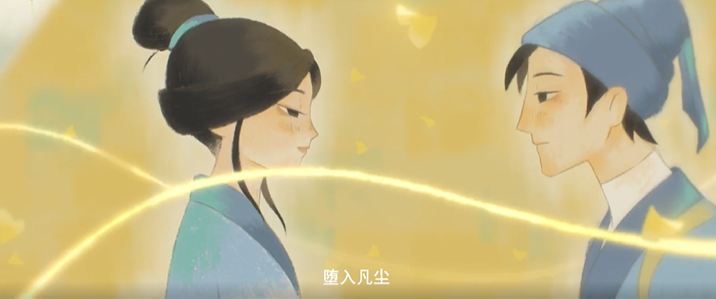
Affection is the emotion that can most touch Chinese’s inner resonance. Unlike other movies that express affection, Zhong Ding pointed out that there are many levels of affection reflected in Falling into the Dust:
First of all, the love between the cowherd and the weaver girl developed family ties. Goldwind and Yulu met on earth. One wanted to atone for his mother, and the other went to heaven to find his mother. They formed friendship by helping each other and holding a group to keep warm, and brother and sister recognized each other under the fetters of family ties. In the great war, Jin Feng saw families suffering, and he chose to inherit his mother’s mission and sacrifice, thus saving the mortal world, showing the thread of family affection, and finally settled on the discussion of "home".
The film also uses the concept of "stitching" to tell these emotional stories layer by layer. Jin Feng experienced the "suture" from misunderstanding mother to understanding mother and repairing mother-child relationship. He and his sister never met each other until they cooperated and found that the other was a "suture" of their loved ones; The two worlds of man and god have also gone through the "stitching" of world outlook and values.
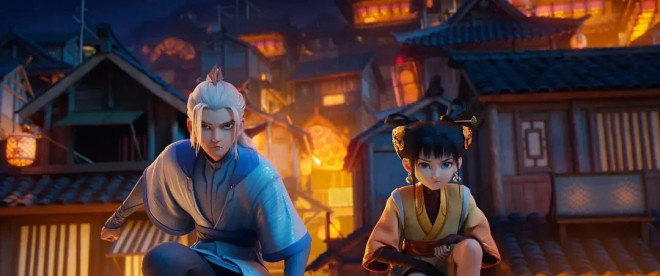
The film doesn’t copy the rebellious confrontation route of "My fate is not determined by heaven". The two worlds of man and god in the film are not on opposite sides, and heaven and earth support each other. Instead, the selfishness of the villain God leads to disputes. What Jin Feng finally does is to maintain the two worlds so that they can communicate and understand each other.
"The Emperor of God raised the Golden Wind like his father. His love and dedication are that the Golden Wind is valuable and conditional, while the sacrifice of the Cowherd and the Weaver Girl to protect their children and the sacrifice of his brother to his sister are unconditional." Zhong Ding said, "As long as you have the power of love, you can be the patron saint of your loved ones", which is the theme that the whole film wants to express most.
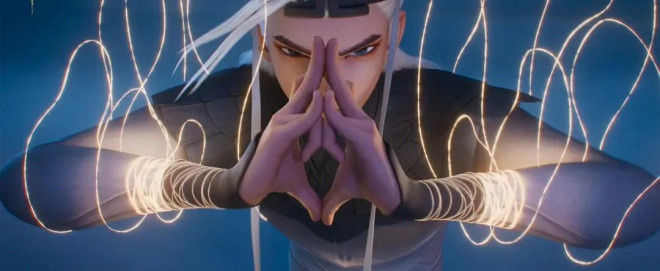
Different painting styles between the divine world and the human world
When creating the short film, Fallen Dust has already established a basic world view: the ancient gods sewed the celestial world and the human world into a "big cloth" through the power of the sun and the moon, and the sewing position was "the canopy". "Lingluo" is the smallest energy in the whole world, and it is woven into two boundaries: thread and sewing, and the small thread group generated from it forms twenty-eight stars, so the twenty-eight stars have strong energy.
Based on this self-consistent logic, the visual systems of man and god form their own references and have their own characteristics.
According to Zhong Ding, the design of the celestial body integrates the concepts of silk thread and weaving, adopts the pale and elegant tone, and the architectural style refers to the Huizhou architecture with white walls and blue tiles. The color of black on the top and white on the bottom continues to the costumes of the celestial figures, achieving a cold and solemn overall atmosphere.
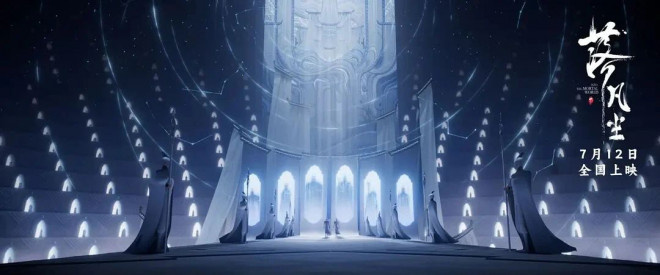
The human world is set in an overhead ancient world, which is a gathering place of China’s traditional cultural impressions. The visual design mainly refers to the Riverside Scene at Qingming Festival in Song Dynasty to create the ancient fireworks temperament, and also refers to the overlapping and scattered urban architecture pattern in Chongqing.
On this basis, we added elements from different dynasties and even modern times, such as hot pot, milk tea and barrage. "Our materials and crafts are ancient, but some concepts are new. There was hot pot in the Eastern Han Dynasty, and there was milk tea in the Tang Dynasty, all of which had a history of development. We became more modern and made the audience smile. In particular, hot pot has a strong portrayal of human life and emotional projection of family reunion, which is more in line with the humanistic attributes of the film.

Compared with the short film, the style of Goldwind is no longer gorgeous. Through the headband and tightly woven belt, it gives the characters a sense of restraint and better shows the character temperament of Goldwind.
Xiao Fan, a young girl, is also the image design inspiration of her younger sister Yulu, which originated from the magpie who claimed to be the "Magpie Bridge" in the legend of Cowherd and Weaver Girl. My sister is jumping and chirping like a little magpie, and her clothes have a long tail.

On the basis of three-dimensional animation technology, Fallen Dust is interspersed with two pieces of two-dimensional animation: one is a traditional cultural element that integrates shadow play and embroidery, and describes the process of brothers and sisters taking over the stars; A period of rock color style shows the past when the cowherd and the weaver girl knew each other and loved each other, with a dreamlike memory color.
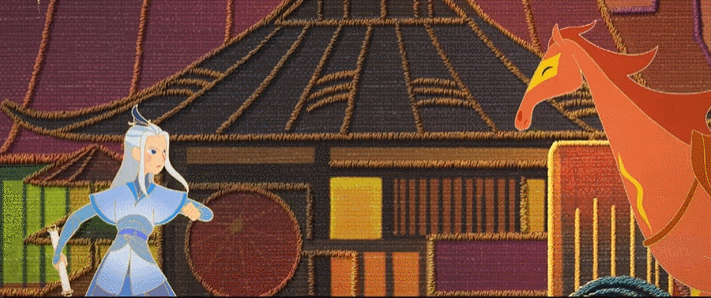
Zhong Ding said that these two paragraphs are montage paragraphs with large plot span. The embroidery style of the first paragraph continues the visual system of the film with cloth as the main part, and the performance on the reel is full of fun. In the second paragraph, the story of the life of the Cowherd and the Weaver Girl and their family is outlined in series with a gold thread, which makes the movie viewing experience more extreme and artistic.

Surprise eggs throughout
In Fallen Dust, there are many details that need to be carefully explored by the audience, among which the core egg that runs through the whole film is — — Ginkgo biloba
The short film begins with a falling ginkgo garden, and ends with my brother helping my sister fend off the floating ginkgo garden, and my sister helping my brother take off the ginkgo garden stuck on his forehead, which not only embodies the oriental artistic conception, but also reflects the harmonious relationship between brother and sister.
In the feature film, Ginkgo biloba has further become the image of the whole theme. There are some details in the film that are linked with the short film: Xiao Jinfeng holds a piece of ginkgo garden and sticks it to his sister’s forehead. After Jin Feng’s sacrifice, there is also a leaf attached to his forehead, forming an emotional echo.

Director Zhong Ding said that Ginkgo biloba is characterized by "cutting branches to live" and has the meaning of "many children and many blessings", which is in line with the expression of family affection and blood inheritance in the film.
Cowherd and Weaver Girl know each other and love each other because of a ginkgo branch, and the ginkgo tree becomes the witness of the family and protects them like an umbrella. After the accident, the ginkgo tree fell and the home was destroyed. But ginkgo garden covered and protected her sister, and was not found by the gods. After Jin Feng’s sacrifice, he turned into a ginkgo tree, and the leaves fell back to the roots, grew again and flourished.

Falling into the dust has opened up a brand-new world, and the new concepts such as twenty-eight stars, silk weaving, and the two worlds of man and god have great room for continuous digging and expanding the series of stories.
As for whether Fallen Dust will shoot sequel to the movie, Zhong Ding said it depends on the box office performance of this film. Compared with movies, it is more likely to be developed into animated series in the future.